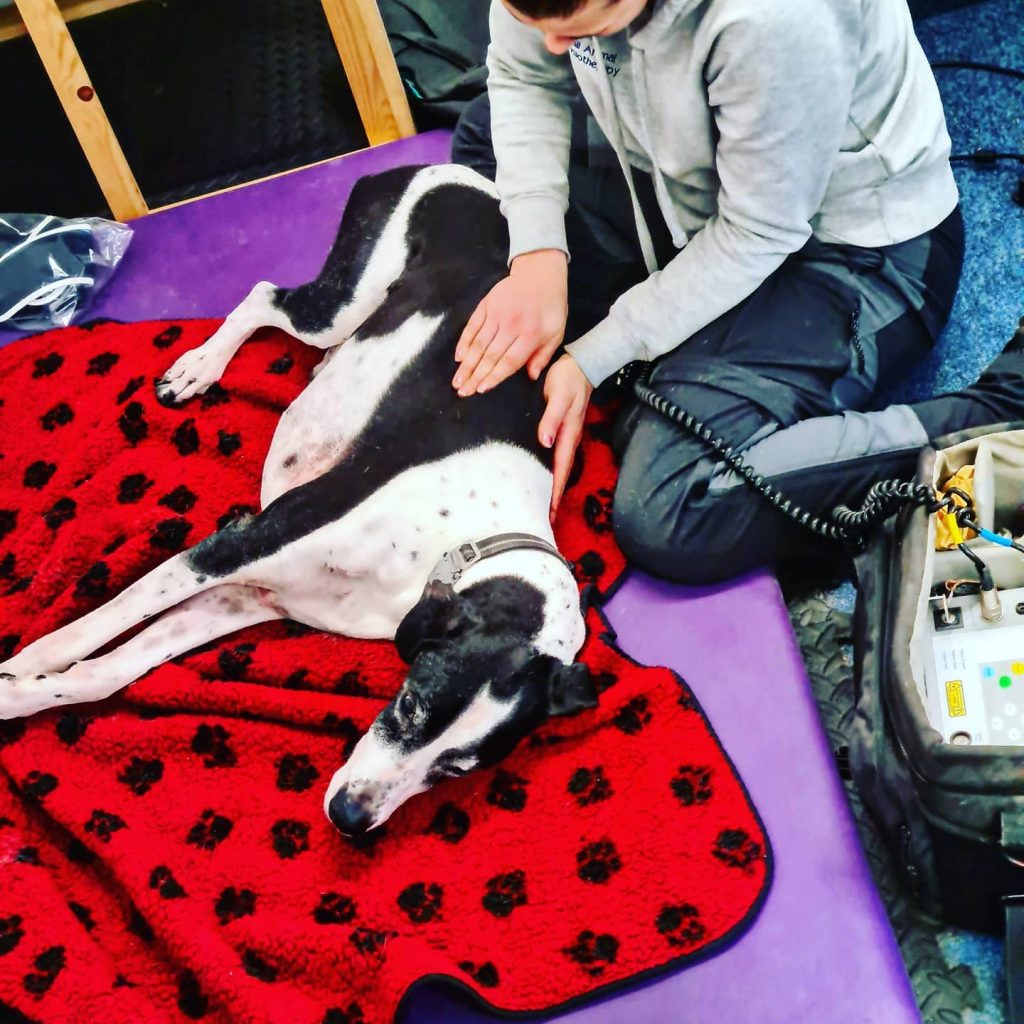The Gold Standard in Physiotherapy and Hydrotherapy for dogs
The Gold Standard in Physiotherapy and Hydrotherapy for dogs

Femoral head and neck ostectomy (FHO) is a surgical procedure in which the ball portion and the attachment (neck) portion are removed from the rest of the femur, which in essence removes the hip joint. The body forms a “new hip” in the months following surgery. But unlike the normal contact of bone and cartilage, the new hip is a collection of scar tissue with additional support from the surrounding muscles and joint capsule.
FHO is a surgical treatment for hip disorders such as a fractured hip, hip dysplasia, hip luxation, and Legg-Calve-Perthes disease in small dogs (less than 50 pounds).
Active dogs often experience better results with FHO than less-active dogs. The muscle mass that has been built up through activity helps to stabilize the joint, allowing the dog to regain pain-free mobility more quickly than inactive pets. Inactive dogs have less muscle mass around the joint, making the joint less stable post-operatively and leading to longer recovery times.
An FHO restores mobility to the hip by removing the head of the femur. This removes the ball of the ball-and-socket joint, leaving just an empty socket. The muscles of the leg will initially hold the femur in place and, over time, scar tissue will form between the acetabulum and the femur to provide cushioning that is referred to as a ‘false joint’. Although this joint is anatomically very different from a normal hip joint, it provides pain-free mobility in most patients.
Care varies based upon the needs of the specific patient, but in general the post-operative recovery can be divided into two phases:
Most dogs will be show signs of complete recovery approximately six weeks post-operatively. Healing may be more rapid in dogs that had normal function up until shortly before the FHO and may be slower in dogs with longstanding, chronic issues.
Most dogs recover fully after FHO surgery and regain essentially-normal function of the affected leg. Although the leg may have a slightly decreased range of motion or decreased limb length after surgery, these impacts are typically minimal and do not impact the pet’s quality of life.
Rehabilitation is a process which aims to maximise patient mobility and wellbeing, returning them to their usual way of life following illness, injury or surgery. We restore pets to normal function (or as close as is possible), efficiently and safely using a wide variety of physiotherapeutic techniques.
Injury and even surgery can disrupt the body’s equilibrium in all sorts of direct and indirect ways. Even a pet’s own protective responses such as the inflammatory process can overwhelm and inhibit healing so one objective of rehabilitation is to reduce this level of inflammation. During rehabilitation, we also aim to boost the circulatory system, improve muscle function, increase range of motion within joints, and stimulate innate pain-relieving mechanisms.
With a committed and planned rehabilitation programme, pets can recover more quickly, realise better outcomes and avoid much pain and discomfort.
The best rehabilitation programmes consider the whole pet, not just the area of injury; we target and improve multiple systems throughout the body without forgetting the invaluable healing effects of boosting mental wellbeing too. From the wound healing properties of laser treatment, and the muscle strengthening of hydrotherapy, to the circulation boosting effects of massage, we will devise a rehabilitation programme to match a pet’s specific requirements.
Our friendly and skilled physiotherapists are ready to help you and your dog with their rehabilitation.
The content on this page is for advice and information only and does not represent veterinary guidance or direction. Please always consult a veterinary surgeon if you are worries about your dog.